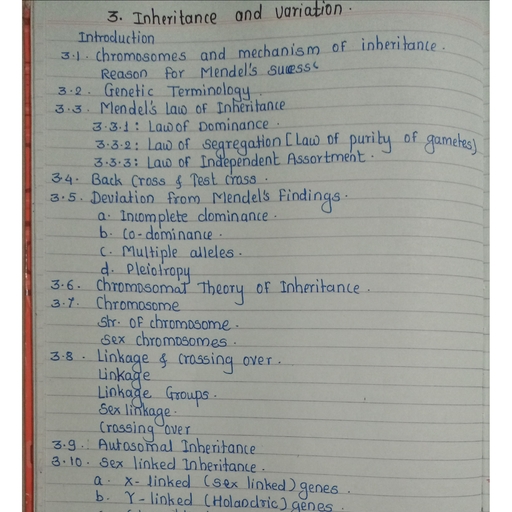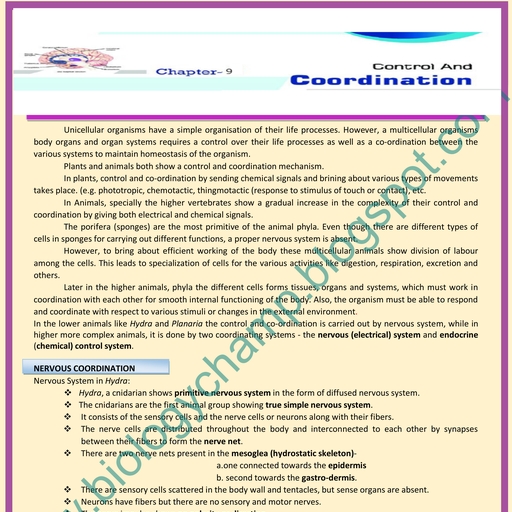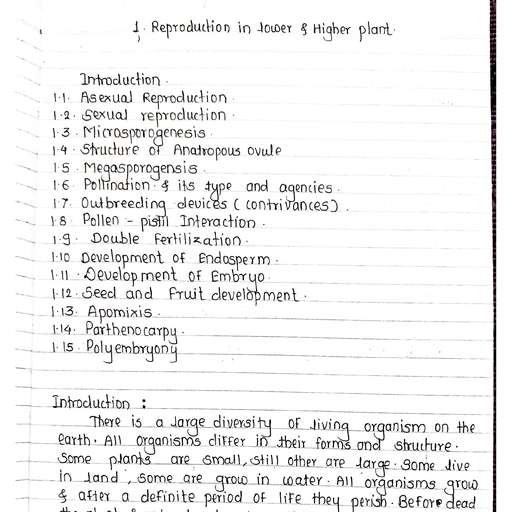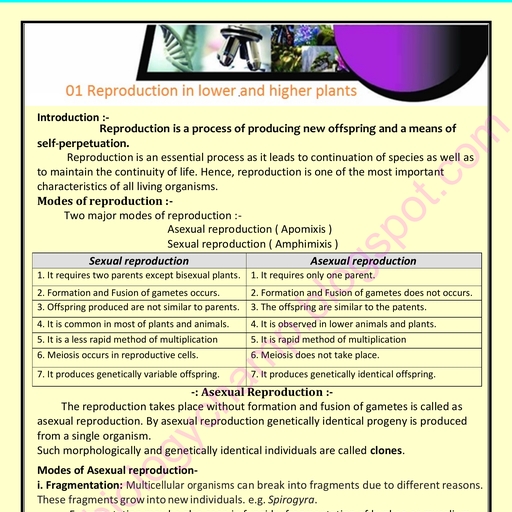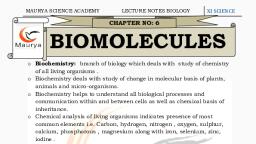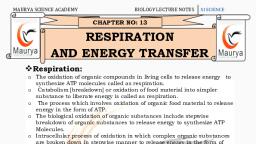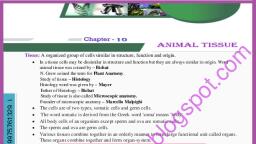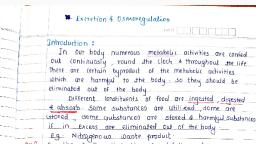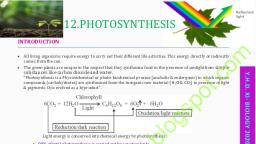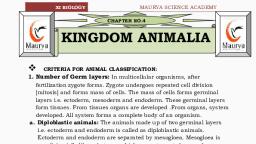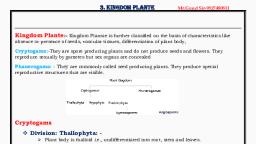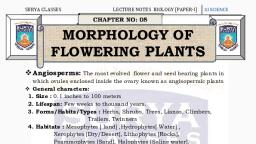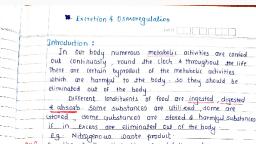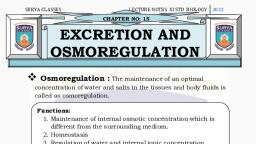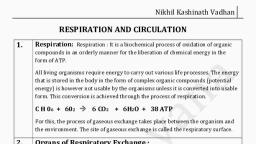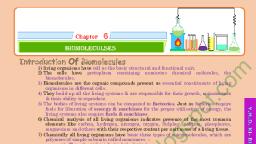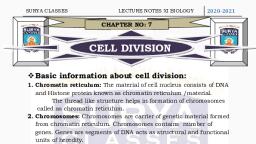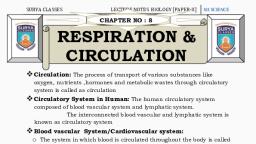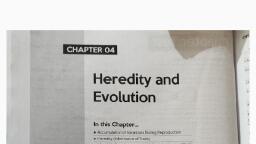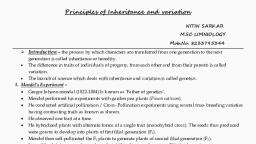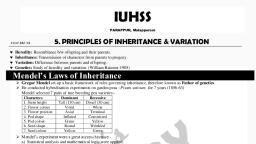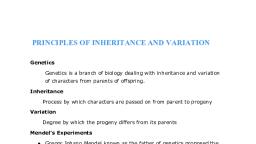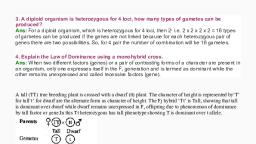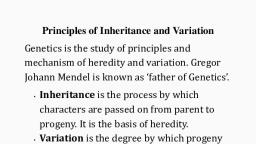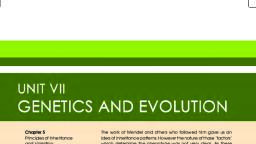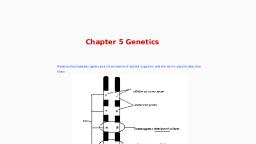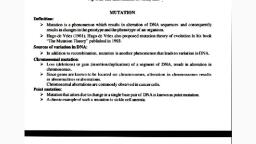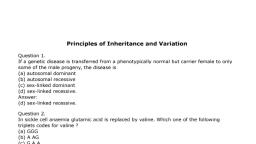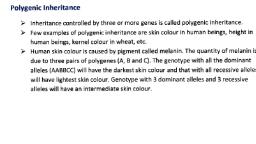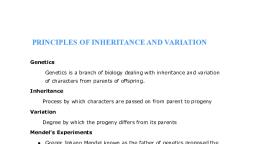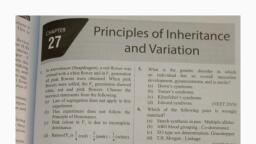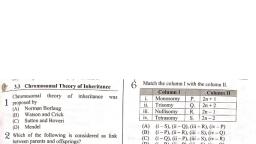Page 1 :
Inheritance and Variation
Page 2 :
Introduction, • The transmission of genetic information from, generation to generation is known as, heredity or inheritance., • Variations are the differences between the, parents and offsprings, among the offsprings, of the same parents and among the, individuals of the same species., • Genetics is the branch of biology that deals, with heredity and variations., • The mechanism of inheritance was, successfully investigated before, chromosomes had been observed or genes, were known.
Page 3 :
Mendelian Inheritance, • The first scientific explanation, regarding inheritance was given by, Gregor Johann Mendel in 1866., • Gregor Mendel, son of the peasant, farmer, was born in Moravia (Austria), in 1822., • Mendel performed experiments on garden pea in a very scientific, manner and proposed postulates or principles which are now, popularly known as Mendel’s laws of inheritance., • He laid down the foundations of genetics therefore he is called, Father of genetics., • Mendel was the first one to say, that the characters are, transmitted from one generation to the next through particles,, which he called ‘factors’ that are now known as genes., • Mendel was genius, much ahead of times as he has given this, concept of factor before the discovery of mitosis, meiosis,, chromosomes and without use of microscope.
Page 4 :
Seven pairs of contrasting visible characters in pea plant (Pisum, sativum), , Pea Plant Traits
Page 5 :
Selection of material, Mendel selected garden pea (Pisum sativum) for his, experiments because of following characteristics :, 1. Garden pea is a annual plant and completes the life, cycle within three to four months. Due to the short, life span he could grow three generations in a year., 2. Pea plant is small herbaceous plant that produces, many seeds and so he grow thousands of pea plants, in a small plot behind the church., 3. Pea plant is naturally self pollinating and was, available in the form of many varieties with, contrasting characters such as tall and dwarf plants,, yellow and green seeds, violet and white flowers, etc., There were no intermediate characters., 4. Though flowers are naturally self pollinating, they are, large enough for easy emasculation required for, artificial cross and produce fertile offsprings.
Page 6 :
Reasons for Mendel’s Success :, 1. His experiments were carefully planned and, involved large sample., 2. He carefully recorded the number of plants of each, type and expressed his results as ratios., 3. In the pea plant, contrasting characters can be, easily recognized., 4. The seven different characters in pea plant were, controlled by a single factor each. The factors are, located on separate chromosomes and these, factors are transmitted from generation to, generation., 5. He introduced the concepts of dominance and, recessiveness.
Page 7 :
Genetic Terminology :, • Character : It is a specific feature of an organism e.g., height of stem., • Trait : An inherited character and its detectable, variant e.g. Tall or dwarf., • Factor : It is a unit of heredity, a particle present in, the organism which is responsible for the inheritance, and expression of a character. (factor is passed from, one generation to the next through gametes)., Factors determines a genetic (biological) character of, an organism., • Gene : It is a particular segment of DNA which is, responsible for the inheritance and expression of, that character.
Page 8 :
• Alleles or Allelomorphs : The two or more, alternative forms of a given gene (factor) are, called alleles of each other. They occupy identical, loci (positions) on homologous chromosomes., Allele is a short form of Allelomorph., • Dominant : It is an allele that expresses its trait, even in the presence of an alternative allele i.e. in, heterozygous condition only. Alternately, the, allele that expresses in F1 generation is called, dominant., • Recessive : It is an allele which is not expressed in, the presence of an alternative allele, i.e. in, heterozygous condition. It expresses only in the, presence of another identical allele. It is an allele
Page 9 :
• Phenotype : The external appearance of an, individual for any trait is called phenotype for that, trait. It is observable and is determined by different, combinations of alleles., e.g. In pea, for the height of stem, Tall and dwarf, are the two phenotypes (Tall is determined by TT, or Tt)., • Genotype : Genetic constitution or genetic make up, of an organism with respect to a particular trait. It is, representation of the genetic constitution of an, individual with respect to a single character or set of, characters., E.g. Pea tall plants can have genotype TT or Tt and, dwarf has tt.
Page 10 :
• Homozygous(Pure) : An individual possessing, identical alleles for a particular trait, is called, homozygous or pure for that trait. Homozygous, breeds true to the trait and produces only one, type of gametes.E.g. tall with TT and dwarf with tt., • Heterozygous (hybrid) : An individual possessing, contrasting alleles for a particular trait, is called, heterozygous. Heterozygous does not breed true, for that trait and produces two types of gametes., E.g. F1 generation hybrids (Tt)., • Pure line : An individual or a group of individuals, (population) which is homozygous or true, breeding for one or more traits, constitutes pure, line.
Page 11 :
• Punnett Square / Checker board : It is a diagram, that is used to show possibilities of combinations, in a particular cross or breeding experiment. It is, named after Reginald C. Punnett who devised, this approach. It is used by breeders to know all, the possible genotypes and phenotypes of, offsprings produced in a cross., • Homologous chromosomes : The morphologically, and structurally similar chromosomes present in a, diploid cell are called homologous chromosomes.
Page 12 :
Monohybrid cross:, A cross between parent differing in only one pair of, contrasting character is called monohybrid cross., E.g. cross of pure tall and pure dwarf plants., Phenotype, Genotype, , Tall, TT, , Gametes, , T, , F 1 generation, , ꭓ, , Tt, Tall, , Dwarf, tt
Page 14 :
Dihybrid cross, A cross between parents differing in two pair of contrasting, character is called dihybrid cross. E.g. cross of pure tall, round seeded, plant with dwarf, wrinkled seeded plants., Phenotype, Genotype, Gametes, , F1 generation, , Round Yellow ꭓ Wrinkled green, RRYY, rryy, , RY, , RrYy, Round Yellow
Page 16 :
Mendel’s laws of Inheritance :, Mendel proposed three basic postulates on the basis of which, three laws were formulated. These are described below:, , 1. Law of Dominance : When two homozygous individuals with, one or more sets of contrasting characters are crossed, the alleles, (characters) that appear in F 1 are dominant and those which do, not appear in F 1 are recessive., Phenotype, Tall, ꭓ, Dwarf, Genotype, TT, tt, Gametes, , F1 generation, , T, , Tt, Tall
Page 17 :
2. Law of Segregation (Law of purity of gametes) : Members of, allelic pair in a hybrid remain together without mixing with each other, and separate or segregate during gamete formation. Thus gametes, receive only one of the two factors and are pure for a given trait., Therefore, this law is also known as Law of Purity of Gametes., law of segregation can be explained with the help of monohybrid cross, experiment., Reappearance of recessive trait in F 2 proves the law., Phenotype, Tall, ꭓ, Dwarf, Genotype, TT, tt, Gametes, , F1 generation, , T, , Tt, Tall
Page 19 :
3. Law of Independent Assortment : When the two homozygous, parents differing in two pairs of contrasting characters are, crossed, the inheritance of one pair is independent of the other., In other words, when a dihybrid forms gametes, assortment, (distribution) of alleles of different traits is independent of their, original combinations in the parents., This law can be explained with the help of dihybrid cross., Appearance of new combination in F2 generation proves the law., Phenotype, Round Yellow ꭓ Wrinkled green, Genotype, RRYY, rryy, Gametes, , F1 generation, , RY, , RrYy, Round Yellow
Page 23 :
Importance of Test cross :, • It is used to find out genotype of any plant, with dominant expression i.e it is used to test, whether an individual is homozygous (Pure), or heterozygous (Hybrid)., • It is used to introduce useful recessive traits, in the hybrids of self pollinated plants during, rapid crop improvement programs.
Page 24 :
Deviations from Mendel’s findings:, With the passage of time, number of deviations were, observed/identified in the post-Mendelian era, that gave, additional information on the patterns of inheritance. These, deviations are then described as Neo-Mendelism., It was observed that the phenotypic expression of a, gene can be modified or influenced by the other gene., These gene interactions are of two types., i. Intragenic interactions : Occur between the alleles of, same gene. E.g. Incomplete dominance and Codominance. It also occurs between the multiple allele, series of a gene., ii. Intergenic interactions : Occur between the alleles of, different genes present on the same or different, chromosomes. E.g. Pleiotropy, Polygenes, Epistasis,, Supplementary and Complementary genes, etc., Some of these interactions are discussed below :
Page 25 :
a) Incomplete dominance :, • In incomplete dominance both the genes of an, allelomorphic pair express themselves partially., • Here one gene cannot supress the expression of the, other gene completely., • Thus the pair is not as one dominant and other, recessive., • In such cases there is intermediate expression in F1, hybrid., e.g. Flower colour of Mirabilis jalapa (four o’clock, plant), If a red flowered (RR) plant is crossed with a white, flowered (rr) plant, then F1 offsprings have pink (Rr), flowers.
Page 27 :
b) Co-dominance :, , • In co-dominance, both the genes of an allelomorphic pair, express themselves equally in hybrids., • Such alleles which are able to express themselves, independently even if present together in hybrids are called, co-dominant alleles., • Thus in co-dominant both alleles are expressed., e.g. coat colour in cattle., There are two types one with red coat(with red colour hair), and other with white coat (with white hair). When red cattles (RR), crossed with white cattles (WW), F 1 hybrids (RW) are roan., Roans have the mixture of red and white colour hair. Thus, both the traits are expressed equally. In F2 generation red (RR),, roans (RW) and white (WW) are produced in the ratio 1:2:1. Thus, in Co-dominance, the genotypic and phenotypic ratios are, identical.
Page 29 :
c) Multiple alleles :, , • When more than two alternative forms (alleles), of a gene in a population occupying the same, locus on a chromosomes are known as multiple, alleles., • Multiple alleles arise by mutations of the wild, type of gene., • A gene can mutate several times producing a, series of alternative expressions., • Wild type is dominant over all other mutant, alleles., • Multiple alleles do not undergo crossing over.
Page 30 :
In Drosophila, a large number of multiple alleles, are known. E.g the size of wings from normal, wings to vestigial (no) wings, i.e., just stumps, is, due to one allele (vg) in homozygous condition., The normal wing is wild type while vestigeal wing, is recessive type.
Page 31 :
Another example of multiple alleles is ABO blood groups in human, beings., • The gene I controls the ABO blood groups., • It has three allele; IA , I B and i., • Since humans are diploid organisms, each person possesses any, two of the three I gene alleles., • IA and IB are co-dominants and are completely dominant over i., • There are six different genotypes and only four different, phenotypes, i.e. blood groups as follows;, Genotype, , Phenotype- Blood group, , IA I A or IA i, IB IB or IB i, IA I B, , A, , ii, , O, , B, AB
Page 32 :
d) Pleiotrophy :, • When a single gene controls two (or more) different traits, it is called, pleiotropic gene and the phenomenon is called Pleiotropy or pleiotropism., • The phenotypic ratio is 1:2 instead of 3:1 because of the death of recessive, homozygote., e.g. sickle-cell anaemia, • The disease, sickle-cell anaemia is caused by a gene Hbs., • Normal or healthy gene HbA is dominant., • The carriers (heterozygotes HbA/Hb s) show signs of mild anaemia as their RBCs, become sickle-shaped i.e. half-moon shaped only under oxygen deficiency., They are said to have sickle-cell trait and are normal in normal conditions., • The homozygotes with recessive gene Hbs however, die of fatal anaemia., • Thus the gene for sickle-cell anaemia is lethal in homozygous condition and, produces sickle-cell trait in heterozygous carrier., • Two different expressions are produced by a single gene.
Page 35 :
Chromosomal Theory of Inheritance, “Chromosomal theory of Inheritance” was put forth by Sutton, and Boveri (1904). It is a theory of genetics which identifies, chromosomes as the carrier of genetic material., , It states that :, • Gametes (sperm and egg) carry all the hereditary, characters. They are the link between parents and, offsprings., • Nucleus of gametes contains chromosomes which carry all, the hereditary characters., • Chromosomes are found in pairs in somatic or diploid cells., • During gamete formation homologous chromosomes pair, and segregate or separate independently at meiosis. Thus, each gamete contains only one chromosome of a pair., • During fertilization, the union of sperm and egg restores the, diploid number of chromosomes.
Page 36 :
CHROMOSOMES, • Chromosomes are filamentous bodies present, in the eukaryotic nucleus., • The term chromosomes was coined by W. Waldeyer, (1888)., • The size of chromosome varies from species to species., • Each metaphase chromosome varies from 0.1 to 33µm, in length and 0.2 to 2 µm in thickness., • Chromosomes are visible only during cell division., • They are capable of self replication and play vital role, in heredity, mutation, variation and evolutionary, development of eukaryotic species., • Chemically eukaryotic chromosomes are made of DNA,, histone and non-histone proteins.
Page 37 :
Number of chromosomes :, • The number of chromosomes is specific and constant for a, particular species, therefore it is of great importance in the study, of phylogeny and taxonomy of the species., • The term Ploidy means degree of repetition of the primary basic, number of chromosomes (i.e. ‘x’) in a cell., • When the chromosome number in a cell is the exact multiple of, the primary basic number, then it is called euploidy., • Euploids include monoploid/haploid (with one set of, chromsomes) diploids (2n-two sets of chromosomes), triploids, (3n- three sets of chromosomes), tetraploids (4n- four sets of, chromsomes) and so on., • When the chromosomes number is not the exact multiple of the, haploid set, it is described as Aneuploidy., • Aneuploidy is either addition or deletion of one or more, chromosome (s) to the total number of chromosomes in a cell.
Page 38 :
Structure of chromosome:, • A typical chromosome consists of two, chromatids joined together at centromere, or primary constriction., • Primary constriction consists of a disc, shape plate called Kinetochore. It is at, Kinetochore, spindle fibres get attached, during cell division., • Besides primary constriction, some few, chromosomes possess additional one or, two constrictions called secondary constriction. At secondary, constriction I, nucleolus becomes organized during interphase., • A satellite body (SAT body) is attached at secondary constriction II, in very, few chromosomes., • The tip of the chromosome is called telomere., • Each chromatid in turn contains a long, unbranched, slender, highly coiled, DNA thread, called Chromonema, extending through the length of chromatid., • The surface of the chromosomes bears number of small swellings called, Chromomeres.
Page 39 :
Types of chromosomes :, Depending upon the position of centromere, there are four types (shapes) of, chromosomes i.e, 1. Metacentric (V shaped) :- centromere is situated in the middle of the, chromosome. The two arms of the chromosome are nearly of equal size., 2. Sub-metacentric (L shaped) :- centromere is situated some distance away, from the middle. One arm of the chromosome is shorter than the other., 3. Acrocentric (j shaped) :- centromere is situated near the end of the, chromosome. One arm of the chromosome is very short while other is long., 4. Telocentric (I shaped) :- centromere is situated at the tip of the chromosome., It shows only one arm and appears rod shaped.
Page 40 :
Sex chromosomes :, • The chromosomes which are responsible for the determination of sex are, known as sex chromosomes (Allosomes)., • Human being and other mammals have X and Y chromosomes as sex, chromosomes., • X chromosome is straight, rod like and longer than Y chromosome., • X chromosome is metacentric, while Y chromosome is acrocentric., • X chromosome has large amount of euchromatin and small amount of, heterochromatin. Euchromatin has large amount of DNA material, hence, genetically active., • Y chromosome has small amount of euchromatin and large amount of, heterochromatin, hence it is genetically less active or inert., • Both X and Y chromosome show homologous and non-homologous regions., Homologous regions show similar genes while non-homologous regions show, dissimilar genes. Crossing over occurs only between homologous regions of X, and Y chromosomes., • Non-homologous region of X chromosome is longer and contains more genes, than that of non-homologous region of Y chromosome., • X-linked genes are present on non-homologous region of X-chromosome, while Y-linked genes are present on non-homologous region of Ychromosome.
Page 41 :
Linkage and Crossing Over:, , Linkage :, , • As the genes are present on the chromosomes, they have a, tendency to inherit together is called linkage., • Linkage was discovered in plants by Bateson and Punnett and in, animals by T.H.Morgan., Linkage is of two kinds – complete and incomplete linkage., I. Complete linkage : The linked genes which are closely located, on the chromosomes do not separate and inherit together are, called, complete linked genes and the phenomenon of their inheritance, is called complete linkage., e.g. X chromosome of Drosophila males show complete linkage.
Page 42 :
II. Incomplete linkage : The linked genes which are widely located, on the same chromosome and may separate by crossing over are, called incomplete linked genes and the phenomenon of their, inheritance is called incomplete linkage., e.g. In Zea mays- colour and shape of grain show incomplete, linkage., , Linkage groups :, i. All the linked genes in a particular chromosome, constitute a, linkage group., ii. The number of linkage groups of a particular species, corresponds to its haploid number of chromosomes., e.g. Drosophila has 4 linkage groups that corresponds to the, 4 pairs of chromosomes. Garden pea has 7 linkage, groups and 7 pairs of chromosomes.
Page 43 :
Sex-linkage:, • The transmission (inheritance) of X-linked and Y-linked genes from parents to, offsprings, is called sex-linked inheritance., • Sex-linked inheritance is of three types i.e. X-linked, Y-linked and XY-linked., Sex linkage is of two kinds :, a. Complete sex linkage :, i. It is exhibited by genes located on non-homologous regions of, X and Y chromosomes., ii. They inherit together because crossing over does not occur in, this region., examples of X-linked traits are haemophilia, red-green colour, blindness, myopia (near sightedness) and for Y-linked are, hypertrichosis, Ichthyosis, etc.
Page 44 :
b. Incomplete sex linkage :, i. It is exhibited by genes located on homologous regions of X, and Y chromosomes., ii. They do not inherit together because crossing over occurs in, this region., examples of X-Y linked traits are total colour blindness, nephritis,, retinitis pigmentosa, etc.
Page 45 :
Crossing Over:, • Crossing over is a process that produces new (combinations), recombinations of genes by interchanging and exchanging of, corresponding segments between non-sister chromatids of, homologous chromosomes., • It occurs during pachytene stage of prophase I of meiosis., • The term crossing over was coined by Morgan., • The mechanism of crossing over consists of four sequential, steps such as synapsis, tetrad formation, crossing over and, terminalization., • The phenomenon of crossing over is, universal and it is necessary for the, natural selection , because it, increases the chances of variation.
Page 46 :
Morgan’s Experiment showing linkage, and crossing over:, Morgan used Drosophila melanogaster (fruit fly), for his experiments because Drosophila can easily be, cultured in laboratory. It’s life span is short, about, two weeks. More ever, it has high rate of, reproduction., Morgan carried out several dihybrid cross, experiments in fruit fly to study genes that are, Thomas H. Morgan, (1866-1945), sex-linked. The crosses were similar to dihybrid, crosses, as carried out by Mendel in Pea., For example, Morgan and his group crossed yellow-bodied, white, eyed female to the wild type brown-bodied, red eyed males and, intercrossed their F 1 progeny.
Page 47 :
He observed that the, two genes did not, segregate independently, of each other and F2 ratio, deviated very significantly, from 9:3:3:1 ratio., Morgan and his group, knew that the genes were, located on X chromosome, and stated that when two, genes in a dihybrid cross, are situated on the same, chromosome, then the, proportion of parental
Page 48 :
combination is much higher than non-parental type. This occurs due, to physical association or linkage of the two genes. He also found, that, when genes are grouped on the same chromosome, some, genes are strongly linked. They show very few recombination (1.3%)., When genes are lossely linked i.e. present far away from each other, on chromosome, they show more (higher) recombinations (37.2%)., for example, the genes for yellow body and white eye were, strongly linked and showed only 1.3% recombination (in cross-I)., White bodied and miniature wings showed 37.2% recombination (in, cross-II). Cross-I shows crossing over between genes y and w. cross-II, shows crossing over between genes white (w) and miniature wing, (m). Here dominant wild type alleles are represented with (+) sign.
Page 49 :
Autosomal Inheitance, • Human somatic (2n) cell contains 23 pairs of chromosomes. They, can be divided functionally as autosomes and sex chromosomes., • A single pair of chromosomes is involved in sex determination and, remaining 22 pairs are called autosomes., • Autosomes control a variety of traits other than sex. These traits, are called autosome linked traits., • Transmission of body characters other than sex linked traits from, parents to their offsprings through autosomes, is called, autosomal inheritance., • Some characters are influenced by dominant genes while some, other are influenced by recessive genes, present on autosomes., For example,, Autosomal dominant traits like Widow’s peak and Huntington’s, disease,etc., Autosomal recessive traits like Phenylketonuria (PKU), Cystic, fibrosis and Sickle cell anaemia.
Page 50 :
a. Widow’s peak :, • A prominent “V” shaped hairline on forehead is described as, widow’s peak., • It is determined by autosomal dominant gene., • Widow’s peak occurs in homozygous dominant (WW) and, also heterozygous (Ww) individuals., • Individuals with homozygous recessive (ww)genotype have a, straight hair line (no widow’s peak)., • Both males and females have equal chance of inheritance., , Widow’s peak and straight hair line
Page 51 :
b. Phenylketonuria (PKU):, • It is an inborn metabolic disorder caused due to recessive autosomal, genes., • When recessive genes are present in homozygous condition,, phenylalanine hydroxylase enzyme is not produced. This enzyme is, essential for conversion of amino acid phenylalanine into tyrosine., • Due to absence of this enzyme, phenylalanine is not converted, into tyrosine. Hence, phenylalanine and its derivatives are accumulated, in blood and cerebrospinal fluid, (CSF)., • It affects development of brain, and causes mental retardation., Excess phenylalanine is secreted in, urine, hence this disease is called, phenylketonuria., • Autosomal recessive traits appear, in both sexes with equal frequency., These traits tend to skip generation.
Page 52 :
Sex Linked Inheritance:, • Genes located on non-homologous region of sex, chromosomes, are called sex-linked genes., • The traits that are determined by sex-linked genes, are, called sex- linked traits., • The inheritance of sex linked genes from parents to their, offsprings, is called sex linked sex linked inheritance., • There are two types of sex-linked genes as X-linked and Ylinked genes., , a) X-linked (sex linked) genes :, i. The X-linked genes are located on non homologous region of X, chromosome and these gene do not have corresponding alleles, on Y chromosome., ii. Female has two X chromosomes. In female two recessive sex, linked genes are required for expression of sex linked traits.
Page 53 :
III. If one X chromosome carries a recessive gene for sex-linked, trait (defect), its effect is suppressed by the dominant gene, present on other X chromosome., iv. The females with one recessive gene are carriers. The carrier, female is physically normal as she does not suffer from the, disease (disorder)., v. Male has only one X-chromosome. If X chromosome carries Xlinked recessive gene for sex linked trait, then it is expressed, phenotypically, because there is no dominant gene on Y, chromosome to supress its effect., vi. Therefore, sex-linked/ X-linked traits appear more frequently in, males than in the females., examples of X-linked traits include Haemophilia, colour, blindness, night blindness, mypoia, muscular dystrophy,etc.
Page 55 :
Night blindness
Page 56 :
b) Y-linked (Holandric) genes :, i. Genes located on non-homologous region of Y, chromosome, are called Y-linked genes., ii. The genes are inherited directly from male to male., iii. In male, the Y-linked genes such as hypertrichosis is, responsible for excessive development of hair on, pinna of ear. This character is transmitted directly, from father to son., , Hypertrichosis, , Baldness
Page 57 :
Colour blindness:, I. Colour blindness is X-linked, recessive disorder where, person is unable to, distinguish between red and, green colours as both the, colours appear grey., ii. It is caused due to recessive X-linked gene (Xc) which prevents, formation of colour sensitive cells, the cones, in the retina of eye., iii. The homozygous recessive females (Xc Xc) and homozygous, recessive male (Xc Y) are unable to distinguish between red and, green colours., iv. The frequency of colour blind women is much less than colour blind, men., v. Dominant X-linked gene (XC) is necessary for formation of colour, sensitive cells in the retina of eye.
Page 60 :
2. Marriage between carrier female (daughter) and normal male, will produce female offsprings with normal vision but half of, them will be carriers for the disease. Half of male offsprings will, be normal while remaining half will be colour blind., Phenotype, Genotype, Gametes, , F 1 generation, , Carrier Daughter ꭓ Normal male, XCXc, , XCY, , Xc, XCXc, XCY, XCXc, XCY, Normal Normal Carrier Colourblind, Female, Male Female, Male, 25%, 25%, 25%, 25%, , From above example , it is clear that the X-linked recessive gene for colour, blindness is inherited from colourblind father to his grandson through his, daughter. This type of inheritance is called as Criss-cross Inheritance.
Page 61 :
Haemophilia (Bleeder’s disease):, I. Haemophilia is X-linked recessive disorder, in which blood fails to clot or coagulates, very slowly., II. The genes for normal clotting are dominant, over the recessive genes for Haemophilia., II. The person having recessive gene for haemophilia is deficient in clotting, factors (VIII or IX) in blood., III. Even minor injuries cause continuous bleeding, hence haemophilia is also, called as bleeder’s disease., IV. The recessive gene for haemophilia is located on non-homologous region, of X chromosome., V. As there is no corresponding allele on Y chromosome to suppress its, expression, so men suffer from this disease. Women suffers only when, both X chromosomes have recessive genes (alleles).
Page 63 :
1. Marriage between haemophilic male with female having normal, clotting of blood , will produce offsprings having normal clotting of, blood in F 1. The sons have normal clotting of blood but daughter will, be carrier for the disease. The carriers have normal clotting of blood., , Phenotype, , Haemophilic male ꭓ Normal female, , Genotype, Gametes, , F1 generation, , XhY, , XHXH, , Xh, , XCXc, XCXc, Carrier daughter, (50%), , XCY, XCY, Normal son, (50%)
Page 64 :
2. Marriage between carrier female (daughter) with male having normal, clotting of blood will produce female offsprings with normal clotting, of blood but half of them will be carriers for the disease. Half of male, offsprings will have normal clotting of blood while remaining half will, be haemophilic., Phenotype, Genotype, Gametes, , F1 generation, , Carrier Daughter ꭓ Normal male, XHXh, , XHY, , Xh, XCXc, XCY, XCXc, XCY, Normal Normal Carrier Haemophilic, Female, Male Female, Male, 25%, 25%, 25%, 25%
Page 65 :
Sex Determination:, • The mechanism by which sex is established is termed as sex, determination., • The term sex refers to sexual phenotype., • In some species, both male and female reproductive organs are, present in same organism. It is described as bisexual or, hermaphrodite or monoecious., • On the other hand, some species in which the organism has, either male or female reproductive organs, is said to be dioecious, or unisexual. Humans are dioecious., , a) Sex Determination in human beings:, i. The chromosomal mechanism of sex determination in human, beings is XX-XY type., ii. In human beings, the nucleus of each somatic cell contains 46, chromosomes or 23 pairs of chromosomes. Out of these, 22, pairs are autosomes and one pair of sex chromosomes.
Page 66 :
III. Human female has a pair of XX,, homomorphic sex chromosomes while, male has XY, heteromorphic sex chromosomes., Thus genotype of :, Female = 44 Autosomes + XX, Male = 44 Autosomes + XY, IV. During gamete formation in male, the diploid, germ cells in testis undergo spermatogenesis, to produce two types of haploid sperms, 50%, sperms contain 22 autosomes and X chromosome while, 50% sperms, contain, 22 autosomes and Y chromosome., IV. In female, the diploid germ cells in ovaries undergo oogenesis to produce, only one type of egg. All eggs contain 22 autosomes and X chromosome., V. Thus human male is heterogametic and female is homogametic., VI. If sperm containing X chromosome fertilizes egg (ovum), then diploid zygote, is formed, that grows into a female child. If sperm containing Y, chromosome fertilizes egg, then diploid zygote is formed, that grows into a, male child., VII. This indicates that the sex of a child depends on the type of sperm fertilizing, the egg and hence the father is responsible for determination of sex of, child and not the mother. Due to lack of knowledge, women are often, blamed for giving birth to female child.
Page 67 :
b. Sex Determination in birds:, I. In birds, the chromosomal mechanism of sex determination is, ZW-ZZ type., II. In this type, females are heterogametic and produce two types, of eggs; 50% eggs carry Z chromosome, while 50% eggs carry W, chromosome., III. Males are homogametic and produce one type of sperms. Each, sperm carries a Z chromosome., IV. Thus sex of individual depends on the, kind of egg (ova) fertilized by the, sperm.
Page 68 :
c. Sex Determination in honey bees:, I. In honey bees, chromosomal mechanism, of sex determination is haplo-diploid, type., I. In this type, sex of individual is, determined by the number of set of, chromosomes received., I. Females are diploid (2n=32) and males, are haploid (n=16)., I. The female produces haploid eggs (n=16) by meiosis and male, produces haploid sperms (n=16) by mitosis., II. If the egg is fertilized by sperm, the zygote develops into a diploid, female (2n=32) (queen and worker) and unfertilized egg develops, into haploid male (n=16) (Drone) by way of parthenogenesis., III. The diploid female gets differentiated into either worker or queen, depending on the food they consume during their development., IV. Diploid larvae which get royal jelly as food develops into queen, (fertile female) and other develops into workers (sterile females).
Page 69 :
Genetic Disorders:, • Genetic disorders are broadly grouped into two categories, as, Mendelian disorders and chromosomal disorders., • Mendelian disorders are mainly caused due to alteration or, mutation in the gene. E.g. Thalassemia, Sickle-cell anaemia,, Colourblindness, Haemophilia, Phenylketonuria, etc., • Chromosomal disorders are caused due to absence or excess, of one or more chromosomes or their abnormal, arrangement. For e.g. Down’s syndrome, Turner’s syndrome,, Klinefelter’s syndrome, etc., , a) Thalassemia:, i. Thalassemia is an autosomal, inherited recessive disease., ii. Haemoglobin molecule is made of four polypeptide chains- 2, alpha (α) and 2 beta (β) chains.
Page 70 :
iii. The synthesis of alpha chains are controlled by two closely linked genes (HBA1, and HBA2) on chromosome 16 while the synthesis of beta chain is controlled, by a single gene (HBB) on chromosome 11., iv. Depending upon which chain of haemoglobin is affected, thalassemia is, classified as alpha-thalassemia and beta-thalassemia., v. It is caused due to deletion or mutation of gene which codes for alpha (α) and, beta (β) globin chains that result in abnormal synthesis of haemoglobin., vi. In Thalassemia, person shows symptoms like anaemia, pale yellow skin,, change in size and shape of RBCs, slow growth and development, dark urine,, etc., vii. Massive blood transfusion is needed to these patients.
Page 71 :
b. Down’s Syndrome (21st trisomy), , 1. Down’s Syndrome is caused due to an extra copy of chromosome, number 21 st. It shows presence of three copies of 21st, chromosome instead of homologous pair., 2. This individuals have 47 chromosomes instead of the normal, number 46., 3. 21st Trisomy occurs due to non-disjunction or failure of separation, of chromosomes (autosomes) during gamete formation.
Page 72 :
4. The incidence of non-disjunction is distinctly higher in mothers, who are over 45 years of old., , Symptoms :, 1. These patients have mild or moderate mental retardation and, skeletal development is poor., 2. Distinct facial features like small head, ears and mouth, face is, typically flat and rounded with flat nose, open mouth and, protruding tongue, eyes slant up and out with internal, epicanthal folds., 3. Flat hand and stubby fingers and palm is broad with single, palmer crease.
Page 73 :
c. Turner’s Syndrome (X monosomy):, 1. It is sex chromosomal disorder caused due to non-disjunction of, chromosome during gamete formation., 2. Individual born with Turner’s syndrome has 44 autosomes with, XO., 3. They are phenotypically female., , symptoms :, They have a short stature (height) and, webbed neck, lower posterior hair line, broad, shield-shaped chest, poorly developed ovaries, and breast, and low intelligence.
Page 74 :
d. Klinefelter’s Syndrome (XXY males), 1. It is chromosomal disorder caused due, to extra X chromosome in males., 2. Thus genotype of individual is 44 + XXY., They are described as feminized males., 3. Extra chromosome is a result of, non-disjunction of X-chromosome, during meiosis., 4. Individual is male and has over all, masculine development., , symptoms :, 1. Voice pitch is harsh and have under, developed testis., 2. They are tall with long arms, feminine, development (development of breast i.e. Gynaecomastia) and, no, spermatogenesis, therefore, individuals are sterile.
